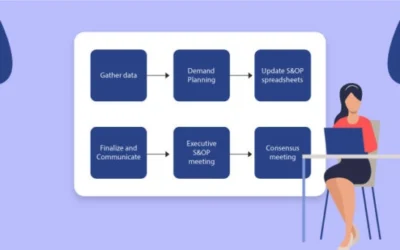What is Sales Forecasting A Beginner’s Guide?
Every business aims at increasing sales. Irrespective of the sector, this remains the primary goal. Many organizations adopt sales forecasting to make decisions that result in profit. But, it is not a baseless assumption. Rather, sales managers spend ample time assessing the variables involved.
If you want to learn in-depth about this topic, continue reading this blog. This blog contains all the necessary details you need to know if you are a sales manager.
What is the Sales Forecasting?
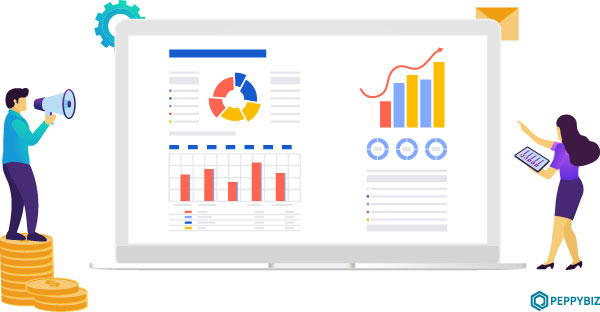
It is the only tool you can use to predict the revenue you will make using sales. A sales manager takes things like past trends, current market trends, and past organizational data to arrive at an accurate forecast. Small businesses focus on a monthly/quarterly revenue forecast while enterprises make predictions for a whole year.
Your team must consider it as a plan to follow and not as the only result they will have. Hence, the effectiveness of the forecast depends on how well your team executes it. While a goal specifies what we should achieve, a forecast predicts how we can achieve those set goals.
Steps to follow
Creating an efficient sales forecast is an important component in making business decisions. However, you must understand that these predictions are never accurate. They always have an error margin. It just shouldn’t differ from the actual results by a lot.
Following these steps will ensure that you carry out the process on the right path.
1. Identify your market:
The first step in creating a forecast document is to do a market analysis. You must list out the following things before you kick off:
- Type of industry.
- A niche within the sector.
- Market predictions for your Niche.
- Price comparison.
Accurate market prediction is the basis for creating a successful sales forecast. Also, identifying the performance of the Niche is essential for a business to succeed. Without accurate data, it is tough to identify steps that need changing. Create an efficient sales process by using this data.
2. Establish milestones:
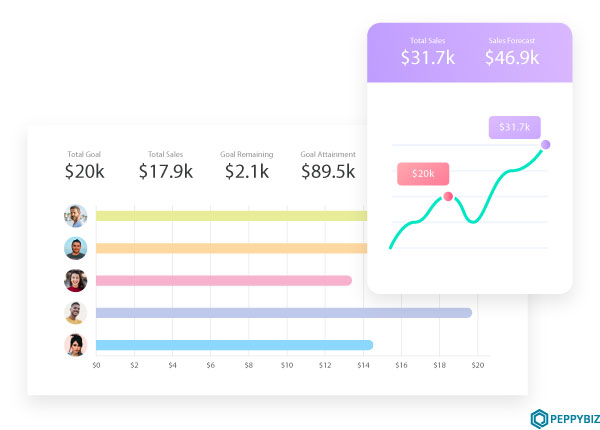
Your sales employees must understand which result is a measure of success and which is not. Most sales managers set daily quotas for their team to make them work more efficiently. Not just for the whole team, individual sales quotas are essential to maintain stable sales.
3. Set a benchmark:
Provide your sales team with metrics to measure their performance. You can use these metrics to define how each plays a role in improving sales. The following are some factors that a sales manager establishes as sales metrics:
- Time taken for the customer to show interest.
- Time taken to close a sales deal.
- Average cost of a sale.
- Time taken to get the customer to stay loyal.
- The mean rate of customer buying again.
- Lead conversion rates at each sales process stage.
For instance, the sales forecast must set an average time for the lead to turn. If it takes longer than that, it will not be as beneficial. Thus, you can ensure that every sales employee works towards achieving the prediction.
4. Enhancing the sales pipeline:
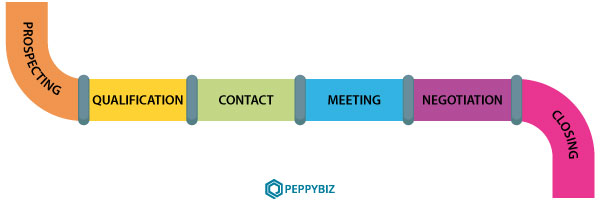
The sales pipeline is the procedure a sales employee follows to close a deal. If you do not have a sales pipeline that adjusts to the current trends, you might fail. Using a CRM tool will come in handy in realizing the sales forecasts. A CRM tool stores all the necessary information for you to arrive at a more accurate forecast.
5. Choose a sales forecasting method:
Yes! There are many ways in which you can arrive at a sales prediction. Most organizations find one that suits their resources and expertise. The next part of the blog will list and explain the common methodologies used in organizations. So, you can choose the method that suits your business.
Benefits of Sales Forecasting.
Some businesses do not believe that a sales forecast helps them in any way. But it is absolutely wrong to ignore a well-established business exercise to improve your revenue. If you are still not convinced, take a look at the following proven benefits:
- Identify potential risks in the sales process.
- Optimise your sales process for demand fluctuations.
- Ensure a higher profit with smart decisions.
- Allocate budgets smartly.
Methodologies for Sales Forecasting
1. Opportunity stage forecasting:
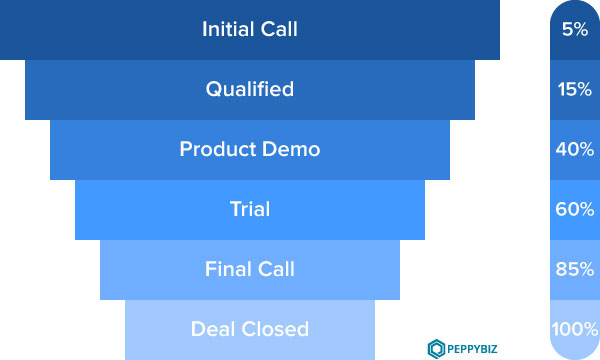
The input data is simply the number of leads who are in the most opportune stages of the sales pipeline. A lead in the penultimate stage of the sales pipeline is more likely to close the deal sooner. Hence, it serves as a good variable for the prediction of sales further down the line.
The first step is to set a reporting period. You can check your reports every month, quarter, or year. For example, if you monitor the probability every month for three continuous months, you can arrive at a constant value. Using which you can predict the probability of the deals closing in the next few months.
It is one of the easiest forecasting methods. But, it is often less accurate than the others. This method doesn’t account for the age of a lead in your sales pipeline. Using only historical data will not help you find an accurate forecast model.
2. Length of sales cycle forecasting:
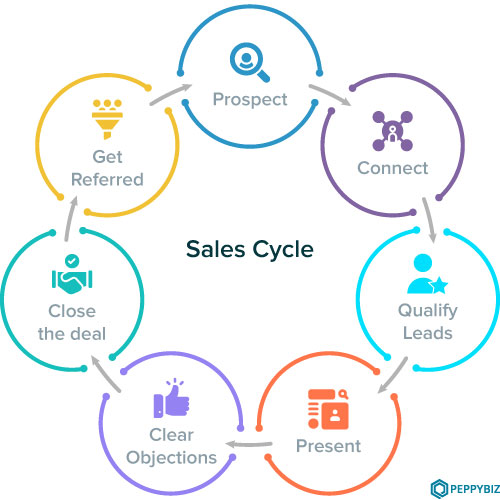
Unlike the previous method, this sales forecasting method considers the time the prospect spent in a sales pipeline. However, it is the same as the previous method in only considering objective data.
It doesn’t care about the opinion of the salesperson. Rather, the only variable that plays a huge role is the time each prospect spent. Sometimes, a lead may stay in the final stages of the sales funnel for a long time and still not buy anything.
On the upside, the length of the sales cycle method acknowledges the different sales cycles. Depending on the sales cycle the lead follows, the predictions vary too. But, how can you actively monitor the way every lead enters the sales pipeline? Integrating your CRM with a marketing automation tool is the only way to collect such data.
3. Intuitive forecasting:
As the name says it all, this forecasting method is simply a result of intuition and no solid data. So, why do businesses use this method, you ask? Businesses who have just started their journey usually use this forecast method. Since they do not have any historical data, it is the only way they can go about creating a forecast model.
How do they do it? They ask their salesperson about the lead. Because the salesperson is the only one who had contacted the prospect hence, they will give you a probability of the prospect actually converting into a paying customer.
By following this method, you have no way of knowing for sure that this forecast would come to be. Also, it depends on the experience of the salesperson. Experienced people know how to analyze the patterns of a lead better than inexperienced ones. At the end of the day, it is only suitable for businesses that have zero historical data.
4. Historical forecasting:
It is one of the prominent ways in which businesses carry out sales forecasting. You look at the previous month/year results and calculate the ROI based on that data. It is as simple as that. However, it is assumed that your current results will be the same as or greater than the previous ones.
Let us list some things that it doesn’t take into account(but it should for an accurate forecast):
- The trends that change due to seasons.
- The ever-changing demand for your product.
Most experts advise you to use this method as a part of your forecasting and not entirely base your model. On the bright side, if your product has a steady market, this model might prove useful.
5. Multivariable analysis forecasting:
It is one of the best methods yielding practical and accurate results. It includes almost all significant factors involved in closing a sale. Hence, it provides useful results that you can use to make important decisions.
But, since it involves a lot of variables, you need a powerful analytics system. If you have limited capital, you might not be able to invest in such systems. Most CRM tools nowadays come with data analytics tools to help you create a forecast model.
Previously, it used to depend on the data provided by the employees. Now you can rely on the CRM tool to use the data already stored in its database. Moreover, results from this method turn out to be accurate almost all the time. You just have to ensure that you input reliable data.
6. Pipeline forecasting:
By far, this is one of the best sales forecasting methods that yield results with fewer marginal errors. The advantage of this method is that you can perform the forecasting at any point in the sales process. But to do that, your sales employees must enter the right data into the CRM at all times.
Any discrepancies in the data will produce a faulty forecast. It demands high-quality data to produce a high-quality result. Just like the previous method, this one also requires a software solution to do sophisticated calculations.
Conclusion
Do you need to increase your revenue? Do you want to plan ahead? Do you want to improve the efficiency of your business decisions? If yes, you can achieve all these results by using sales forecasting. Even small businesses with no historical data draft excellent sales processes with the help of a forecast.


